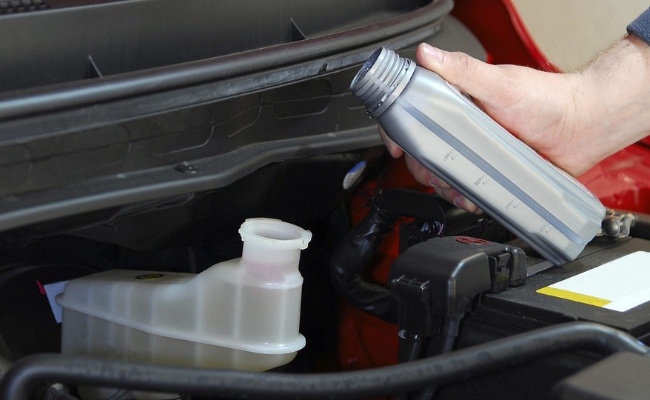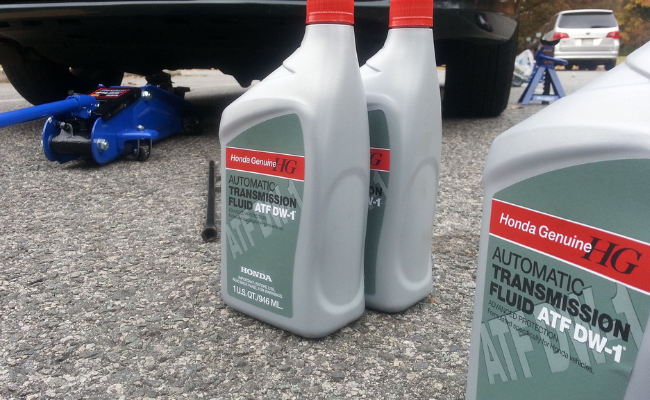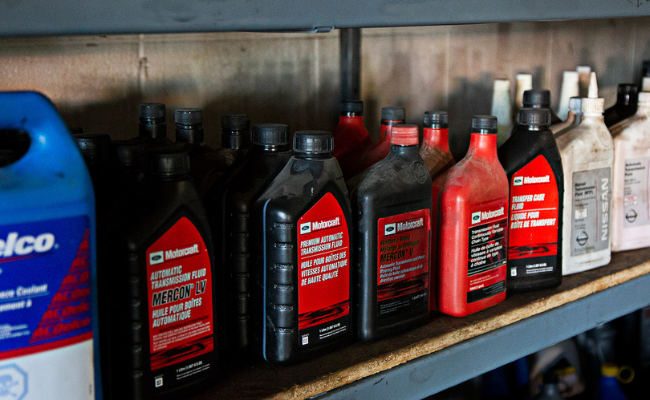How To Check Transmission Fluid
Drivers should practice regular maintenance of their vehicles by checking various components. Specifically, they must check the transmission fluid.
If your car is running out, you must refill it to avoid damaging its transmission system. If the fluid is murky, it’s time to replace it to prevent more serious and expensive repairs.
This article will explain how to check your transmission fluid so that you can properly take care of your car. Later, you will learn how to refill and replace the fluid when necessary.
How to check your transmission fluid level

Photo Credit: www.nshonda.com
Check your transmission fluid by starting your car’s engine. Park it on a level surface and engage the parking brake.
Leave the engine running for roughly 10 minutes to ensure the engine is warm. Otherwise, the transmission fluid dipstick will likely provide an inaccurate reading.
Open your car’s hood and find the transmission fluid dipstick. It looks like a lid with a valve or a dial. A rear-wheel drive automobile typically has it near the passenger side of the engine.
On the other hand, front-wheel drive cars usually have the dipstick near the driver’s side of the transmission.
It is usually near the engine oil dipstick. Also, you may read your car’s instruction manual to locate the transmission.
Once you find it, twist or pull it out to reveal the transmission fluid dipstick, wipe it clean with a clean rag, and reinsert it into the transmission fill tube.
Next, remove the dipstick again, and check the fluid level. Look for two markings for “full:” warm and cold. If the oil does not reach the “warm” line, you must carefully refill the fill tube.
Pour transmission fluid in small increments until the transmission fluid reaches the “warm” line. Do not overfill the fill tube or spill transmission oil on hot engine parts!
Other signs you need to refill your transmission fluid

Photo Credit: www.rac.co.uk
Checking the fluid via dipstick is only one way to check your transmission oil level. However, you should be wary of the following symptoms to change the oil immediately:
First, look out for puddles forming under your car, indicating the possibility of a leak. Second, change the transmission fluid if it has a dark color.
Third, your transmission may need more oil if it roars when accelerating or navigating corners. Fourth, you need a refill if the vehicle runs as if rolling over a rumble strip.
Fifth, your automatic transmission vehicle may flash a high transmission temperature light on its dashboard.
That indicates your transmission oil could be accumulating more heat than usual. Moreover, that may signify a transmission problem.
Sixth, the oil may emit a slight burning or tart odor. Lastly, you might notice the transmission slipping or the engine revving when maneuvering around corners.
That could mean you lack fluid, and there is not enough to submerge the fluid pick-up. You may also notice shifting is becoming more difficult than before.
You might notice sliding, bumps, noises, and slipping when changing gears. That is especially true if you’re riding a manual transmission car.
It involves stepping on the clutch pedal to allow the transmission system to change gears. If there is an issue with the fluid, your car may suddenly stop when shifting gears.
What if you run out of transmission fluid?

Photo Credit: www.quakerstate.com
A vehicle out of transmission fluid is unlikely to move or shift gears. Worse, it would likely need costly and lengthy repairs.
Follow the tips above to maintain your vehicle and avoid repair costs. Also, you should replace the fluid according to the manufacturer’s recommendations.
The usual service interval is 30,000 to 60,000 miles for manual transmission vehicles. Meanwhile, you should change the oil every 60,000 to 100,000 miles for automatic transmission.
You might also need an oil change if the fluid is darker than normal. Moreover, you could replace the fluid yourself, but it is best to ask for help from professionals.
You can request a transmission oil change from specific gas stations or automobile service centers. Also, you may want to include other maintenance procedures, like a motor oil change.
What is transmission fluid?

Photo Credit: www.popularmechanics.com
Transmission fluid is a type of hydraulic fluid that lubricates the bearings and other metal components of a car’s transmission system.
The latter transfers power from the engine to the wheels. In other words, you need the transmission system so that the engine can turn the wheels and move your vehicle.
Moreover, its metal parts come into contact with each other to help the engine move a car’s wheels. Transmission oil reduces friction among these components.
As a result, they ensure parts function for longer periods and prevent them from damaging each other.
What are the types of transmission fluid?

Photo Credit: www.nationaltransmission.ca
You may have heard people classify cars into two types: manual and automatic. These classifications refer to the type of transmission a car uses.
Consequently, each requires a different type of transmission oil. The former requires manual transmission fluid (MTF), otherwise known as “lube” or “oil.”
It tends to have a thicker consistency, darker color, and a stronger odor than automatic transmission fluid (ATF).
On the other hand, ATF is for vehicles with automatic transmissions. Unlike MTF, it usually has a thinner consistency and a red, blue, green, purple, or yellowish color.
Also, you could use a synthetic transmission oil made with different chemical reactions. As a result, this type of fluid is less likely to degrade, oxidize, or thin out in high temperatures.
The general rule of thumb is to match your vehicle’s transmission type with the corresponding transmission oil.
However, you should use the type of transmission oil specified by your car manufacturer. Read its instruction manual or online guide for more information.







